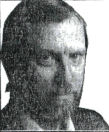| |
When I think of Matagorda Island, I don' think of sheep.
Being originally from the sheep country in West Texas, it just never struck me as a place where one would find a lot sheep, but there was a time when there were sheep all over the island.
Recently while visiting at Seadrift with Myrtle Hawes, she recalled helping to catch sheep on the island before World War II with her husband's sister, Lurline.
The former Myrtle Pendergrass of Austwell, she married William C. "Kelly" Hawes in 1941, just in time to help him move off the island after the Army condemned the family lands for anairbase. married William C. "Kelly" Hawes in 1941, just in time to help him move off the island after the Army condemned the family lands for anairbase.
"He had been living on the island with his brother, E.G.," she says. "There were a number of Hawes families on the island at the time and others with interests there, the presence of the family going back on Matagorda Island to around the mid-1800s." While generally thought of as cattle ranchers, the family heritage also includes sheep raising, all the way back to old Hugh W. Hawes himself, who had sheep, as did other members of his family, the junior Hugh W., Alfred B. and William J., all being listed in the 1880 census as sheep raisers.
There were as many or more sheep than cattle on the island at the time, some flocks numbering well into the hundreds and even thousands of head.
This was at a time, going back to when the town of Saluria existed, that the island population totaled 150 or more residents, the number dropping to mainly the Hawes family and a few others a hundred years later when Myrtle Pendergrass married Kelly Hawes.
While she never lived on the island, as such, she spent a great deal of time there.
And, after the war, members of the various Hawes families continued to run cattle on the island under a lease arrangement with the government that existed until June of 1991 when the U.S. Fish and Wildlife Service ended the family's cattle operations.
|
|
 |
Henry's
Journal
|
|
|
Henry
Wolff Jr.
|
"I spent my last night there that June 26," Myrtle Hawes says. "I just wanted to be alone on the island."
For years after the war, the Hawes families ran their cattle together on the island with different brands, until the latter years when they were all run in partnership under one brand.
Her son, Kelly, worked cattle from the time he was old enough to stand on a washtub to reach the stirrups of his saddle. He later worked cattle with a motorcycle — one on which he had a serious confrontation with an enraged bull — also with a three-wheeler that the cattle respected more than they did the more familiar horses, and he even tried dogs once.
Mrs. Hawes says her brother, Olan Pendergrass, loaned them some cow dogs but they weren't used to the cattle on the island and the cattle weren't used to them. "They took after jackrabbits," she recalls.
When the dogs were returned, they were so exasperated they even attacked her brother's milk cows. Mrs. Hawes has many fine memo- jj ries of the island, like setting on the ; back of a cattle barge with "Uncle ' Alfred" Hawes' daughter, Mary Bertha, who many know better as ; Sister Perpetua. There were other experiences, like when they couldn't cross the bay in a cold, wet norther with the cattle.
Not only did they raise both cattle and sheep on the island prior to World War II, but also turkeys and ' herded them "on a horse just like cattle."
In ways, for the island families, it was like a world all its own.
Between the bays and the Gulf at the edge of Texas
|
|